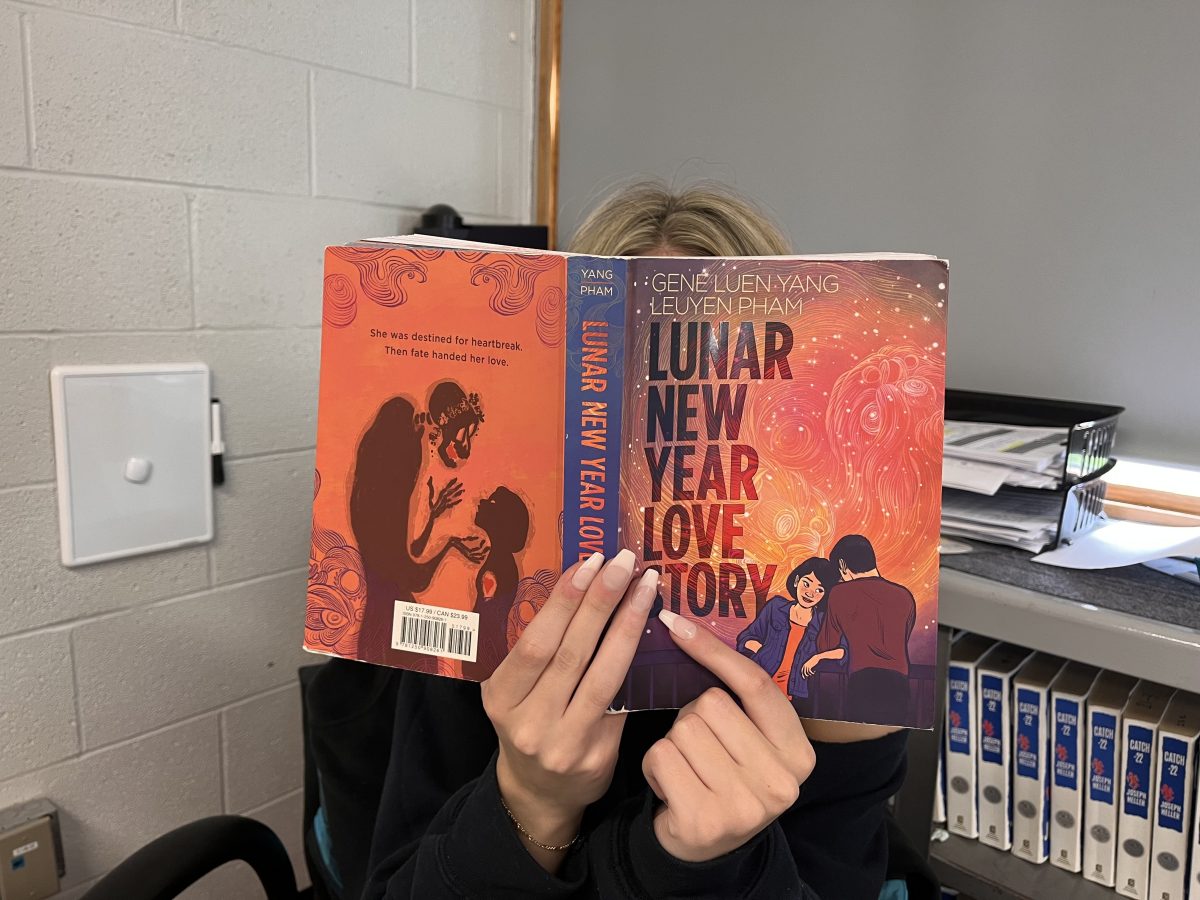Lunar New Year Love Story by Gene Luen Yang and Leuyen Pham tells a tale about Valentine’s Day, family, and what it truly means to love through a relatively unknown hobby: lion dancing. The beautifully illustrated novel follows Valentina, a young girl with a passion for Valentine’s Day cards, and her (imaginary?) friend St. Valentine. As Valentina navigates her relationships with family, friends, and potential lovers, she becomes increasingly convinced that her family is cursed to be unlucky with love. Scared to be destined to suffer, Valentina makes a rash decision but lessons she learned from lion dancing managed to change her mind. Spoilers ahead!
Picking up a graphic novel was a decent step outside of my comfort zone. I adore the way chapter books can make me fall in love with the characters and dive into the rush of a story, but I had yet to experience that with graphic novels. While Lunar New Year Love Story proved me right yet again, it did engage me more than I expected.
The characters were surprisingly complex for having their stories told through imagery, and the dynamic between Valentina and Bernice kept me drawn to the novel. While I felt the romantic relationships should have been further developed, I especially enjoyed the attention the novel paid to platonic love. The detailed relationships between Valentina and her father, grandmother, friends, and even her absent mother drove home the importance and validity of platonic love.
However, I felt the plot was overly predictable, featuring an antiquated love triangle where Valentina chooses the expected partner by the end of the novel. With a fairly stereotypical storyline for a character who doesn’t believe in love, there were only two aspects that stood out to me. First, Yang masterfully wrote about Valentina’s revelation of what it means to love through the art of lion dancing, a surprisingly perfect metaphor (I’ll leave you to find out more). The inclusion of St. Valentine, although in a sometimes slightly horrifying way, made the story feel more tangible, and I always love the idea of playing off little known pieces of history.
Overall, what made the novel were the stunning illustrations, courtesy of Leuyen Pham. With simple strokes and color palettes that change based on Valentina’s emotions, the depictions create the gorgeous, heart-on-your-sleeve feel of the story. Despite the predictable plot line, the beautiful way the book incorporates aspects of Asian culture so casually and appreciatively paired with the candid understanding of love might make this graphic novel worth a peek.
Yang leaves the reader with an important message: to love is to suffer. And it’s worth it.




































![Teacher Lore: Mr. Hillman [Podcast]](https://bsmknighterrant.org/wp-content/uploads/2025/03/teacherlorelogo-1200x685.png)




